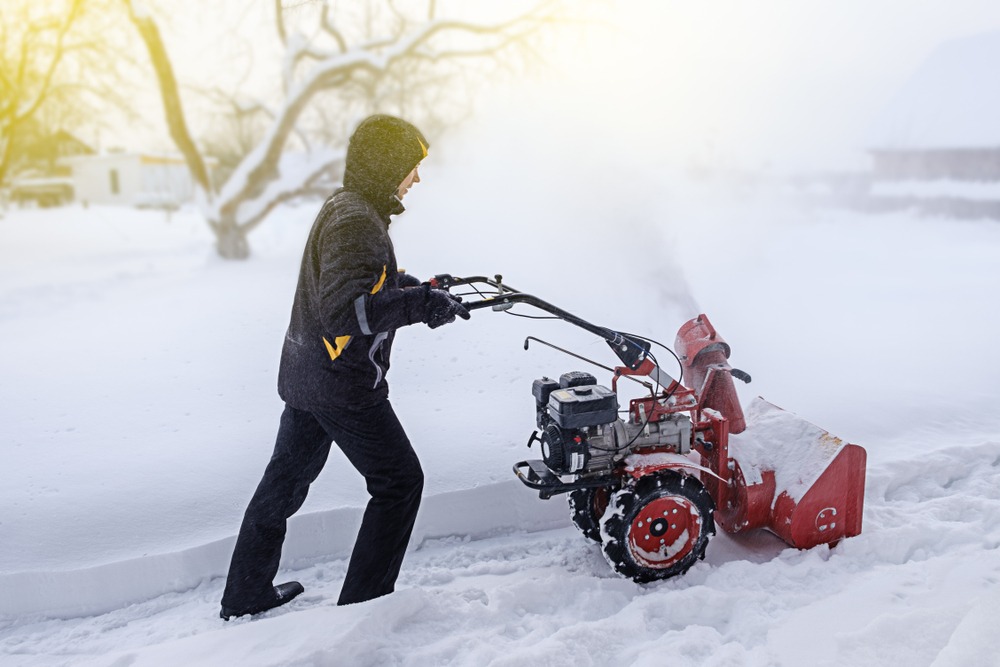The transition from summer to winter involves more than simply swapping out your lighter clothes for heavier layers such as coats, mittens and scarves.
Your home also needs attention when it comes to preparing for winter.
From getting your snow gear ready, to check in on your heating system, here is your winter home checklist to ensure your house is set and ready for the wintertime:
1. Prepare Your Heating System
Before the temperatures plummet, you want to make sure your heating system is ready to keep your home warm and comfortable.
Inspect your air filters to see if they need to be cleaned and replaced and clear the space around your furnace to eliminate any fire hazards.
If your furnace has a pilot light, ensure that this is lit.
Lastly, test your thermostat. When you switch on the heat, it should kick in right away.
2. Check the Batteries in Smoke and Carbon Monoxide Detectors
Turning on your heating system increases the risk of fire to your home. Keep you and your family safe by checking the batteries in your smoke detectors.
Likewise, ensure that your carbon monoxide detectors are operational as well. With your doors and windows being closed in the winter, less airflow increases the dangers of this deadly gas.
3. Prepare Your Pipes
During the cold winter months, freezing water can expand in your pipes and cause them to burst.
Prevent frozen and burst pipes by insulting any interior pipes near windows, doors and in unheated areas of your home.
To help keep your pipes from freezing, you should set your heat to no lower than 55°F.
4. Prevent Ice Dams from Forming
Ice dams are ridges of ice that form at the edge of your roof and prevent melting snow from draining.
This can result in water backing up behind the dam and leaking into your home, causing damage to walls, ceilings and insulation.
You can prevent ice dams from forming by ensuring that your roof has proper insulation and venting as well as clearing snow off your roof.
5. Flush and Insulate Your Hot Water Tank
Flushing your hot water at least once a year will help prevent the build-up of sediment.
In gas-powered tanks, too much sediment at the bottom of your tank can create hot spots, which can lead to damage to the tank and cause premature failure.
For electric water heaters, sediment buildup can cause the lower heating element to fail.
To help conserve energy, you can wrap your hot water tank with an insulating blanket to help prevent them from losing heat.
6. Get Your Snow Equipment Ready

Before the snow even falls, you should move your shovels out of storage and place them in a convenient area where they are easy to reach.
If you use a snowblower, now is the time to have it inspected and serviced. The last thing you want is to prepare to tackle a mountain of snow with a snowblower that doesn’t work.
Lastly, stock up on some salt, ice melt or sand. That way, when it’s time to head out into the ice and snow to shovel the steps, sidewalk and driveway, you can give yourself some extra traction.
7. Check for Air Leaks
No matter how you heat your home, you will experience heat loss (and higher heating costs) if there are air leaks around your windows and doors.
Inspect these areas for cracks in the caulking or weatherstripping. Replace if necessary.
You may want to consider installing storm windows and doors to further help reduce heat loss – especially if you have single-pane windows.
8. Properly Store Outdoor Items
Before the temperatures drop and the snow flies, you want to make sure you’ve properly tucked away outdoor items such as furniture and equipment.
Store your gardening and landscaping tools in a dry space, such as a shed or garage.
If you don’t have room in a garage or shed for your patio furniture, you can keep it safe from the elements (and rust) by covering it with a heavy tarp.
9. Prepare for Storms
Winter storms are inevitable and can lead to issues such as power outages. Make sure you’re prepared with a winter-storm kit.
This kit should include bottled water, non-perishable food, flashlights, first-aid supplies and a portable phone charger.
If your area habitually experiences power outages due to winter storms, you may want to consider investing in a generator.
Get Ready for Winter
The more you can do to prepare for winter before the cold weather hits, the easier the transition will be for both you and your home.
The last thing you want is to be stuck in the dead of winter with no heat, heat loss or malfunctioning snow-removal equipment.
Take some time now and follow this maintenance checklist to get your home ready for winter.



Comments are closed.